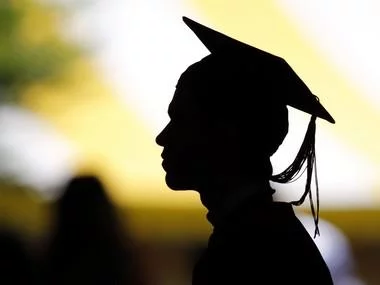The failure of Indian education system is stark when seen in light of the fact that thousands of students every year go abroad for college education. European universities and even the European governments seem to have a more definite plan for Indian students than India. A graduate degree in India is mostly a farce in most of the colleges. There is hardly any education imparted and it is seen as more a stepping stone for a masters or a necessity to do something else. Students file into colleges spend their time in everything but education. Courses are outdated, faculty is inept, illiterate to the changes around them.
A recent experience in Guru Gobind Singh Indraprastha University really brought all these issues upfront. The outreach cell of the university organised a seminar on globalisation. It roped in a public sector company as a sponsor, tied up with a one man think tank from Chandigarh. Invited to speak I was piqued as it seemed like a interesting effort. It seems only the invitation was genuine. Neither the university nor the organisers were actually interested in seminar. All that they were interested in was getting to know a minister. The obsession of the academia in Delhi with politicians is not new. Most faculty appointments are at behest of the politicians. Huge physical infrastructure but very poor soft infrastructure is not just true of public universities like Guru Gobind Singh Indraprastha but it is even worse in private universities.
The highway from Delhi to Roorkee, is dotted with shells of buildings posing as private universities. Actually on any national highway anywhere if you see a glass or fancy building with nothing around it will be a private university. Everything is new and shiny, designed to grab a student’s attention. Large rooms are labelled labs with hardly any equipment inside, huge campus with skeletal staff and even less faculty.
As of 2014, there are 677 universities, 37,204 colleges and 11,443 stand-alone institutions in India, as per the statistics from the website of India’s HRD ministry. There is no dearth of institutions willing to give a degree for money, education or skills is not the concern. Higher education is in rot at all levels, the irony is that these numbers are touted as an indication of the prowess of our education system. Not a sign that this rapid mushrooming has created an edifice that is destroying an aspirational class. There is very little debate and discussion on the fact that our higher education system has completely collapsed.
A study done by a private body says that approximately 18.43 percent of engineering graduates are employable, which means 80 percent of them are unemployable. The situation is worse for plain graduates and that is where the real malaise lies. Employers say just 5 percent of the graduates in other disciplines are actually employable. What these figures mean is that in sum higher education or college education has collapsed. Do we see any concern around this collapse. NO.
The IITs, AIIMs, IIMs are cited as examples of success, not because they have great faculty but because of the students. How many faculty members from our so called Institutes of National Importance have done anything worthy. A committee under Anil Kakodkar was formed in 2011 to revamp the 30 NITs, the second rung of the IITs, and not the 37,204 colleges or the 11,304 institutions. The rationale according to the preamble to this committee says that these 30 NITs can aid in ‘nation building’. So what will the lakhs of students in thousands of colleges doing? If they are not involved in aiding the nation building exercise than we have a much bigger problem on hand.
Kakodkar’s report is a bundle of homilies, generalities and advice from geriatrics. It was submitted in 2014 to the then Education Minister Smriti Irani. Here is a sample of Kakodkar committee’s recommendation: “ICT for the NITs acts like a force multiplier. NITs must deploy and upgrade the IT infrastructure and associated facilities. Each institute must facilitate extensive use of computer-aided / on-line teaching, virtual labs, e-learning resources, connectivity with National Knowledge Network, etc”. This is a recommendation in 2014, in the world of MOOCs, Coursera, and availability of free lectures from MIT or any other university of repute. In a world of mobile internet, ubiquitous internet access. Its recommending National knowledge network !! will a student go there or see and hear the latest lecture from a noble laureate. Even the term ICT referring to Information computer technology harks back to the 60’s when some of the committee members actually did their education.
This is the saddest and the most ironical part of higher education the system is ossified because of its sheer reliance on age, hierarchy or seniority. While the world that their students live and learn in has changed. Higher education will not be revived or pulled out from depths of his failure by people who do not have a stake in its future. A retired nuclear scientist more a bureaucrat should not be recommending anything about the future of anything let along higher education. Bureaucrats should be kept far away when it comes to reinventing.
While we struggle with higher education, Europe seems to be eyeing the conscientious Indian student. More and more students are now travelling abroad for education. Earlier cost used to be big barrier for a foreign education. But as our higher education system is collapsing other countries are seeing it as an opportunity. German chancellor Angela Merkel has approved a six year plan to attract Indian students to Germany. Under fire for her liberal immigrant policy she is pushing German universities to attract Indian students waiving off tuition fees for them. Daria Kulemetyeva, of Germany’s largest public university, Georg-August-Universtat Gottingen, says, Indian students will have to pay just the administrative fees of 300 euros per year if they are selected in a course. The travel and accommodation costs are separate. The rationale, according to Kulemetyeva is to seek diversity in the student population.
It is not just German universities, almost every country in Europe and its public universities are keen to attract Indian student. Universities from Sweden, Norway, Spain, and France have been working very hard for the last few years to attract Indian students. They have adapted their courses in English offering free language lessons for immigrant students, etc. A combination of ageing population and fall in interest in higher education among the current generation is forcing these universities to India. British universities have always found India a fertile ground for students.
John Sanders of University of Sussex, says the lack of standards in Indian higher education means that our Indian student population has always been growing year on year. Harish Lokhun of University of Edinburgh says, now Indian students go for even liberal arts and humanities whereas earlier they were only interested in engineering and the likes. Even the oldest university in Europe, Sweden’s Uppasala University is looking for Indian students, and for a reason. Lina Solander, of Uppasala University, “When we are looking at health problems, Indian students would have a much more different view of health policy than a local Swedish student.”
Spain has formed a consortium of four universities to target Indian students. Matilde Delgado Chauton represents Universidad Autnoma De Madrid, one of the leading university which is part oft he consortium. She says, that the gaps in higher education in India means that only a small number of students gets access to quality, we are looking at bridging those gaps by offering a quality education with a European exposure. Spain is also looking at funding Indian students. Indian students have traditionally looked at just US universities for graduation, now they have more avenues opening up.
If India does not look at the collapse of its higher education closely not only will we be leading to a new brain drain but a collapse of aspirations. This is especially of concern to the new government that has come to power on the rise of this aspirational class.






Leave a reply